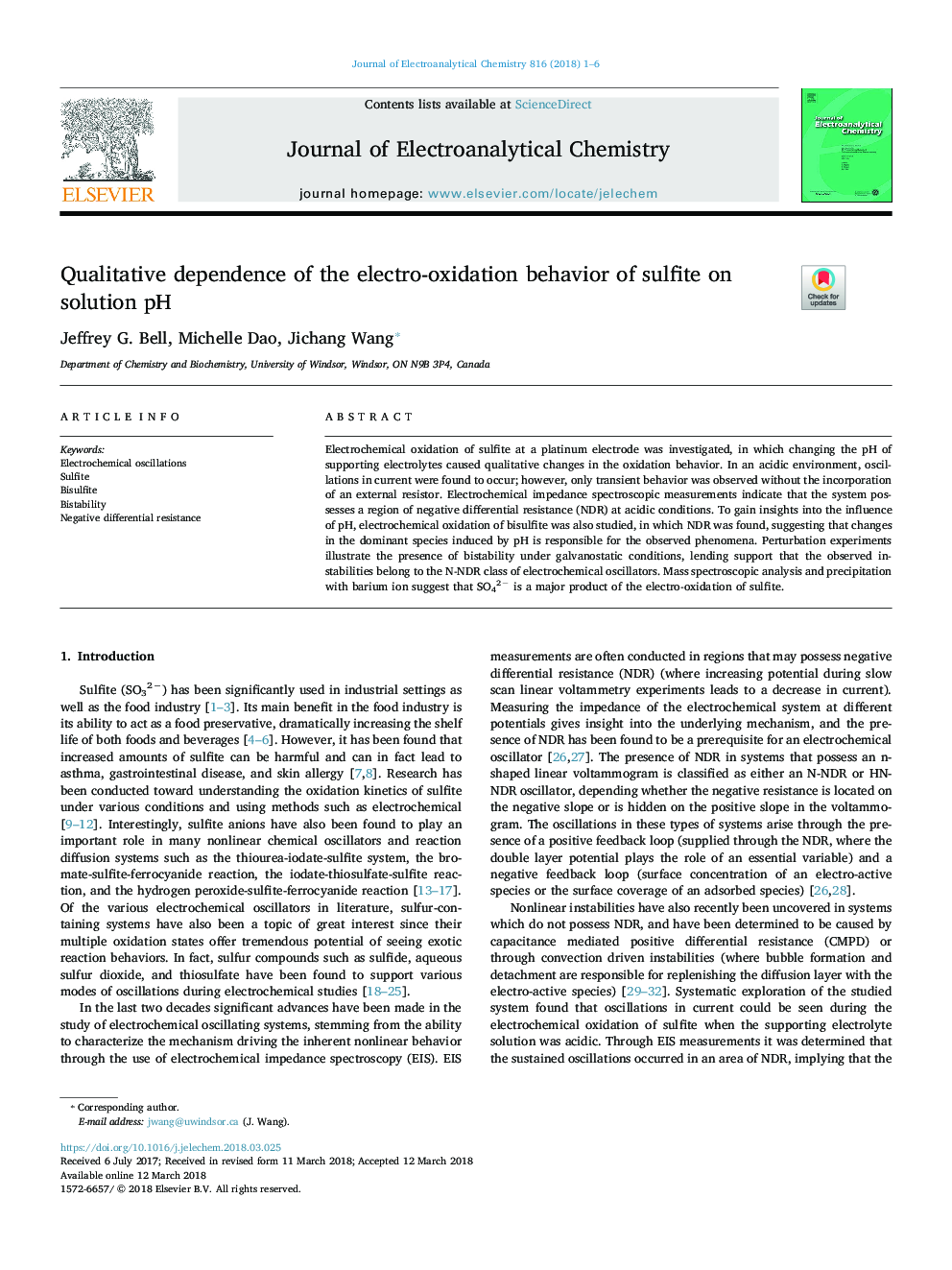| Article ID | Journal | Published Year | Pages | File Type |
|---|---|---|---|---|
| 6661876 | Journal of Electroanalytical Chemistry | 2018 | 6 Pages |
Abstract
Electrochemical oxidation of sulfite at a platinum electrode was investigated, in which changing the pH of supporting electrolytes caused qualitative changes in the oxidation behavior. In an acidic environment, oscillations in current were found to occur; however, only transient behavior was observed without the incorporation of an external resistor. Electrochemical impedance spectroscopic measurements indicate that the system possesses a region of negative differential resistance (NDR) at acidic conditions. To gain insights into the influence of pH, electrochemical oxidation of bisulfite was also studied, in which NDR was found, suggesting that changes in the dominant species induced by pH is responsible for the observed phenomena. Perturbation experiments illustrate the presence of bistability under galvanostatic conditions, lending support that the observed instabilities belong to the N-NDR class of electrochemical oscillators. Mass spectroscopic analysis and precipitation with barium ion suggest that SO42â is a major product of the electro-oxidation of sulfite.
Related Topics
Physical Sciences and Engineering
Chemical Engineering
Chemical Engineering (General)
Authors
Jeffrey G. Bell, Michelle Dao, Jichang Wang,
